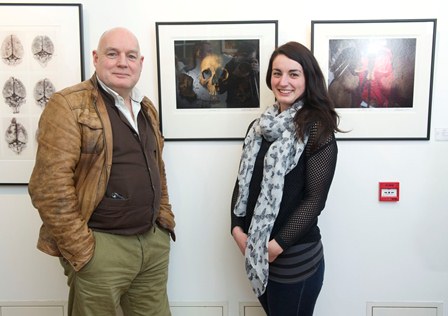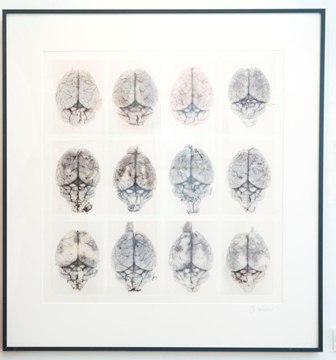Stephen Bean and Christian Waeber exhibits

Stephen Bean
As an artist, Stephen has worked with internationally renowned artists such as James Turrell, Franz Gertsch, Franz Stahler, Marshall Hutson, Gerd Kever and Patrick Bradfield. Educated in England, he studied Photography and Art in Brighton. He was made a Licentiate of the Royal Photographic Society in 2002 and a Fellow in 2004. He worked as a combat cameraman covering the wars of independence in central Africa. He covered the air relief of Srebrenica in 1995, and the relief of Sarajevo in 1996. His influences are firmly aligned to the avant-garde and in particular to the work of Alexander Rodchenko, Man Ray and the Czech avant-garde photographer Jaroslav Rossler. Stephen has worked as the UCC University Cameraman since 1999, and teaches photography through the UCC Centre for Adult Continuing Education.
Christian Waeber
Christian Waeber moved from Boston to UCC in early 2013.Over the last 20 years, Christian has combined his work as medical researcher with a career in fine art photography. As a photographer, he is particularly interested in night and architecture photography, as well as the human body. As a scientist, his main area is brain research and the interactions of blood vessels with brain tissue.
Spike Island 1 – Skull and Spike Island 2 – Maxilla
Stephen Bean
These convict remains were discovered in un-marked graves during the 2013 Spike Island archaeological excavation. The Spike Island convict burial ground is depicted on the 1879 map as being to the south west of the fort. But on the 1902 Ordnance Survey map it was listed as unused. The reason the team is excavating here is to try and establish the extent of over 2000 convict burials. During the second half of the 19th century, an estimated 2000 convicts died on the island. Mortality rates were high (over 10 %), particularly in the years of the Great Famine. The project will shed light on the lives of the thousands of men and boys who passed through the prison, including the many hundreds whose remains lie in unmarked graves. The Project leader is Dr Barra O’Donnabhainn, Department of Archaeology, UCC. These images form part of a larger exhibition planned for later this year.
Typology
Christian Waeber
Christian Waeber moved from Boston to UCC in early 2013.Over the last 20 years, Christian has combined his work as medical researcher with a career in fine art photography. As a photographer, he is particularly interested in night and architecture photography, as well as the human body. As a scientist, his main area is brain research and the interactions of blood vessels with brain tissue.
Limited edition archival pigment print on Hahnemühle Bamboo fibre paper (1/9). In this work, I am trying to explore the concept of individuality, and how even subtle differences between genetically identical animals can influence the outcome of biomedical studies. In these 12 images, the blood vessels from mouse brains have been filled with India ink in order to visualize their pattern and distribution. These photographs were taken in the context of brain ischemia studies (stroke), in which differences in brain vascularization would be a confounding factor. Typologies (the taxonomic classification of physical characteristics commonly found in buildings and urban places) have been explored extensively by photographers such as Bernd and Hilla Becher. Together, the Bechers photographed barns, water towers, or grain elevators from a number of different angles, but always with a straightforward "objective" point of view, and used overcast days, so as to avoid shadows, emphasizing basic structural patterns. The style and presentation of my vascularization studies were chosen in homage to their work.

The Jennings Gallery
Áiléar Jennings
Contact us
College of Medicine and Health, Brookfield Health and Science Complex, College Rd, UCC
